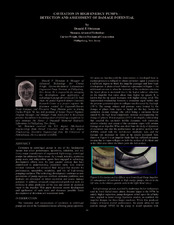| dc.description.abstract | Cavitation In centrifugal pumps is one of the fundamental factors that affect performance, operability, reliability, and life. Every major manufacturer of engineered, high-energy, centrifugal pumps has addressed these issues. As a result, industry, academia, pump users, and independent agent have engaged in technology development efforts over the past quarter century that have contributed to understanding, predictive tools, new erosion, resistant materials, and advanced fluid designs that improve the performance, operability, reliability, and life of high-energy pumping machines. The technology development continues as new generations of pump engineers confront cavitation and assess damage potential. In addition, advanced computational prediction tools are evolving to allow prediction of the size and extent of cavitation vapor in the impeller. This paper discusses recent development and application of such tools and discusses possible future development of detection and assessment tools. | en |


